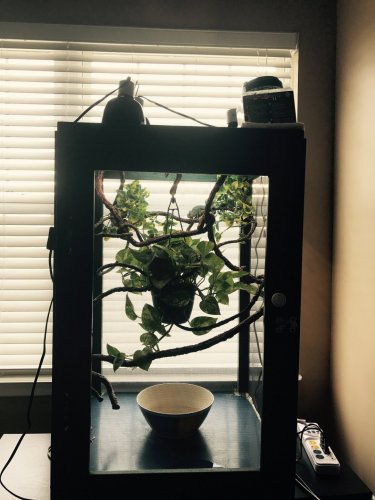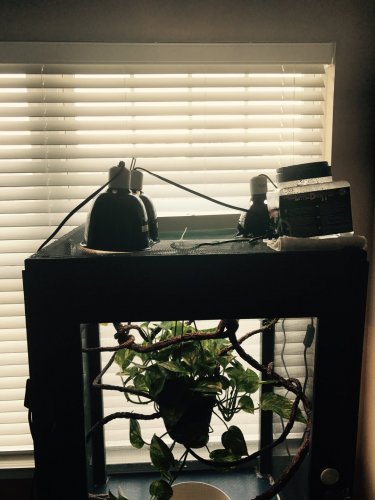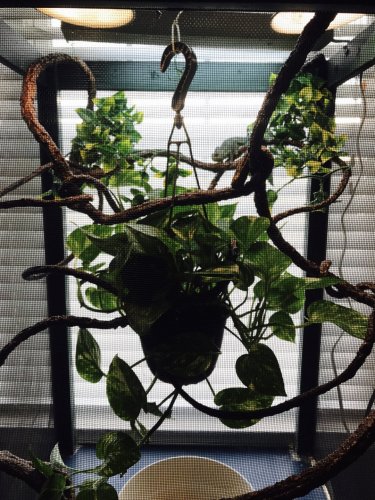jajeanpierre
Chameleon Enthusiast
Thank you! I get so stuck in this back-in-forth of "oh he's pulling through!" and then he gets so frail it seems he's on the verge of death, and then he picks up again. My vet said 80% of his chams die from this, though Oberyn has made it longer than many he has seen with the condition. What sort of changes have you been making for his comfort?
Find a new vet.
Regarding heat and humidity, enclose the cage on at least three sides, automatic misting system (think about your drainage), live plants, more powerful heat source during the day only.






